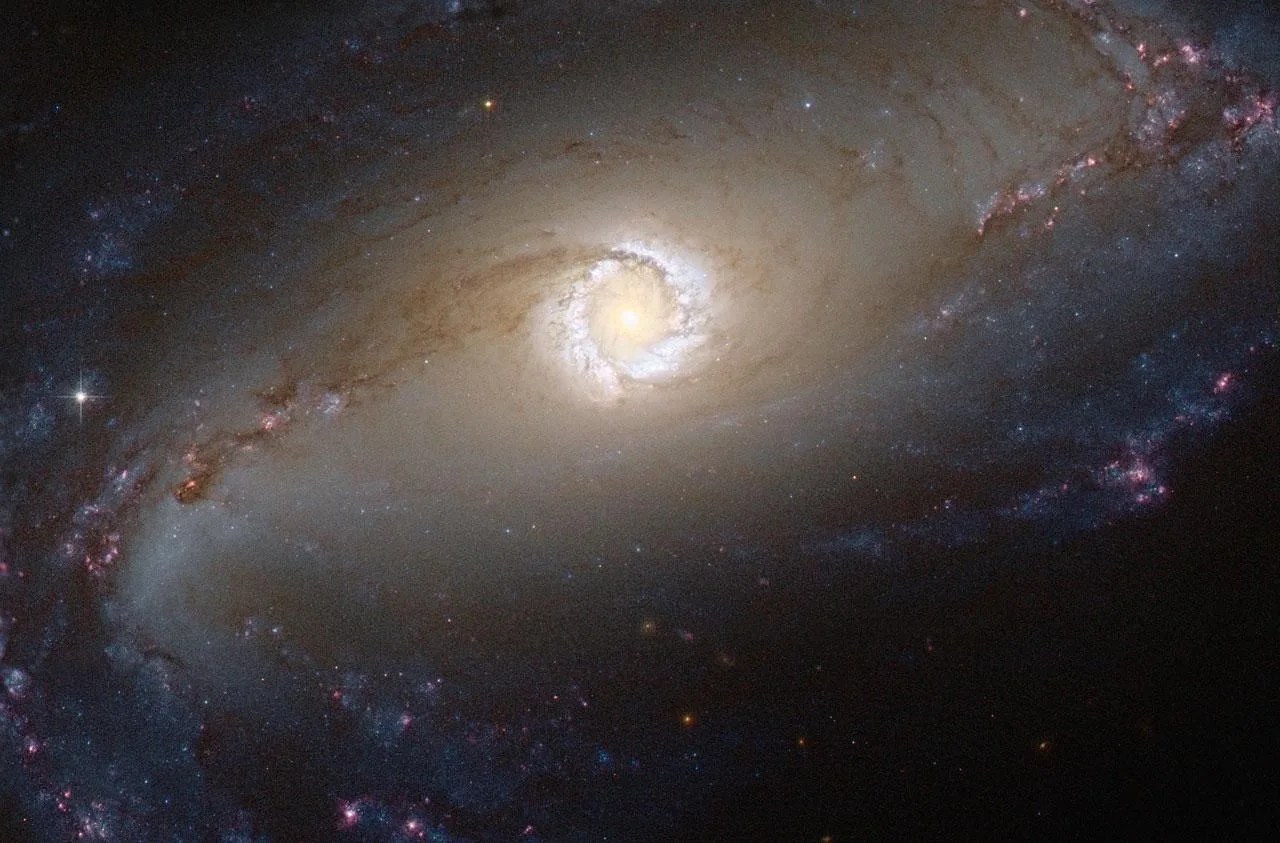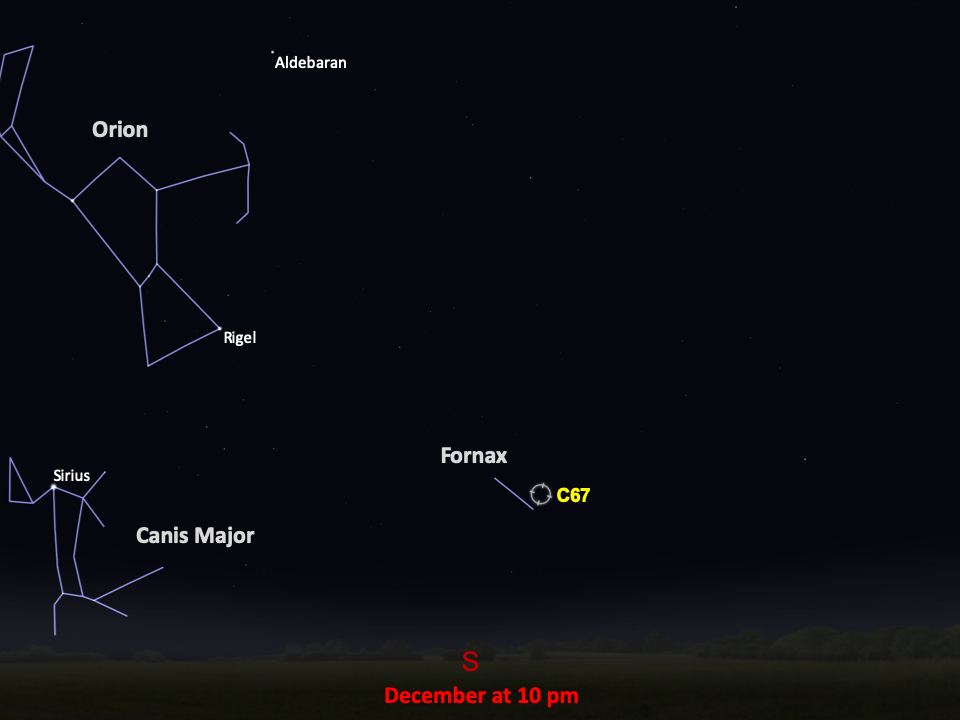Caldwell 67
This beautiful spiral galaxy is best viewed in early summer from the Southern Hemisphere or early winter from the Northern Hemisphere.
Distance
45 million light-years
Apparent Magnitude
9.2
constellation
Fornax
object type
Spiral Galaxy

About 45 million light-years away lies spiral galaxy Caldwell 67. This Hubble image zooms in toward the core, detailing a “bar” of stars and dust that extends away from the bright center toward the lower left and upper right. The galaxy’s vast spiral arms stretch much farther beyond this view, over 100,000 light-years as they silently sweep through space.
Combining observations in visible and infrared light captured by the Advanced Camera for Surveys, this image details a bright ring of stars around the center of the barred spiral galaxy. New stars are bursting to life in this ring, forming from an influx of material that’s funneled into the galactic core.
Centered inside the ring, at the very heart of this galaxy, lurks a black hole that is about 100 million times as massive as the Sun. The supermassive black hole is voraciously eating up matter surrounding it. This matter releases powerful radiation as it is pulled into the black hole, making the star-filled center of the galaxy even brighter.
Caldwell 67 is especially interesting to both professional scientists and amateur astronomers. It is a popular target for supernova hunters ever since the galaxy experienced three supernovae in relatively rapid succession, all appearing between 1992 and 2003. Scientists are intrigued by the galaxy’s satellites — smaller “dwarf” galaxies that orbit Caldwell 67 like moons. Studying these galaxies could reveal new information about how members of such a galactic group interact with each other and co-evolve.
This sparkling barred spiral galaxy was discovered by William Herschel in 1790 and subsequently cataloged as NGC 1097. It was originally classified as a nebula because prior to the 20th century, no one knew of the existence of other galaxies.
The galaxy is found in the constellation Fornax and is best viewed during December. While this Hubble image provides a spectacular view of Caldwell 67, the galaxy is more difficult to spot with smaller ground-based telescopes. Even though the galaxy’s core is bright, you’ll need a large telescope to distinguish its dimmer spiral arms. Still, the magnitude-9.2 galaxy provides an opportunity to view a spiral galaxy face-on, and who knows, you might spot a supernova!
For more information about Hubble’s observations of Caldwell 67, see:
A Wanderer Dancing the Dance of Stars and Space


Glossary
Dwarf Galaxy - A small, faint galaxy with only millions to a few billion stars.
Magnitude - The brightness of an astronomical object, represented by a number; bright objects have low numbers on the magnitude scale, while dim objects have high numbers.
Nebula - An interstellar cloud of dust and gas; either a location where new stars are being forged or a cloud of material ejected into space by a dying star.
Satellite Galaxy - A galaxy that is gravitationally bound to a larger galaxy, much like how the planets in our solar system are gravitationally bound to the Sun.
Spiral Galaxy - A galaxy characterized by its spiral structure, with star-filled arms that extend out from the center of the galaxy and host regions of star formation.
Supermassive Black Hole - A black hole millions or billions of times more massive than the Sun, typically residing at the center of a large galaxy.
Supernova - The explosion of a massive star at the end its life, which ejects material into space and causes the star to temporarily brighten in our sky.
Explore Hubble's Caldwell Catalog
The following pages contain some of Hubble’s best images of Caldwell objects.

Caldwell 1
Also known as NGC 188, this group of stars formed from a large cloud of gas making the stars roughly…

Caldwell 2
This shell of gas is expanding outward, away from the dying star within.

Caldwell 3
This barred spiral galaxy was first spotted by British astronomer William Herschel in April 1793 in the constellation Draco.




